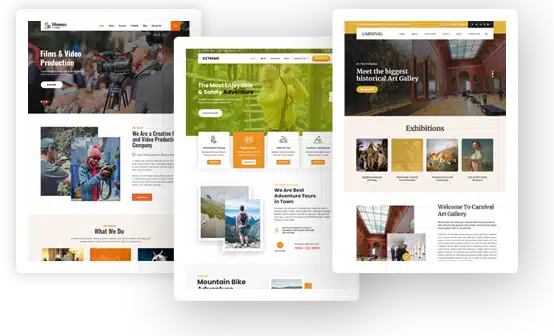How JavaScript-Enhanced HTML Editors Improve UX (With Real Examples)

Discover how flexible HTML editors with JavaScript integration streamline development and enhance UX with real-time previews, drag-and-drop tools, and responsive design support.
User experience (UX) defines how well a website connects with its audience. In today’s web development landscape, websites must function smoothly, look professional, and adapt seamlessly across devices.
A flexible HTML WYSIWYG editor—especially one enhanced with JavaScript capabilities—empowers developers to meet these demands by streamlining workflows and simplifying customization.
Understanding Flexible HTML Editors: Features and Functions
A flexible HTML editor offers developers robust tools to create and customize websites efficiently.
These editors accelerate design workflows and focus heavily on improving the user experience.
Key features include:
- Real-Time Previews: Developers can see updates instantly as they code or drag elements, reducing errors and improving precision.
- Drag-and-Drop Interfaces: Intuitive design tools allow users to rearrange elements without writing complex HTML or CSS.
- Customizable UX Components: Control over fonts, layouts, and interactive behaviors helps meet diverse design expectations.
- Interactive Design Features: Components like collapsible menus, clickable elements, and embedded multimedia keep users engaged.
🧪 Example: In a recent Froala project, real-time previews cut prototype testing time by 30% compared to traditional manual updates.
A flexible HTML editor works especially well when paired with JavaScript-driven functionality, expanding its design capabilities and improving user-centered outcomes.
Enhancing UX with JavaScript Integration
JavaScript extends what HTML editors can do—transforming static interfaces into dynamic, responsive user experiences.
Key UX benefits of JavaScript-enhanced editors:
- Dynamic Interactivity: Easily implement sliders, pop-ups, dropdowns, and real-time form validation.
- Immediate Feedback Loops: Live changes help developers troubleshoot and refine designs on the spot.
- Advanced Customization: JavaScript libraries like React or Vue enable developers to tailor interfaces to highly specific use cases.
💡 For example, CKEditor allows deep plugin customization via JavaScript, letting teams integrate complex Markdown processors or collaboration modules.
Cross-Project Flexibility and Use Cases
While many editors exist, such as Froala, TinyMCE, and CKEditor, the core functionality of flexible WYSIWYG editors remains consistent. They simplify the development of responsive interfaces and reduce the likelihood of design inconsistencies.
Why choose flexible editors across industries?
- Easily adapt interfaces for e-commerce, SaaS dashboards, landing pages, and CMS platforms.
- Speed up onboarding for non-technical users by providing intuitive visual editing tools.
- Maintain consistency across projects with reusable templates and themes.
Best Practices for Using Flexible HTML Editors
To maximize the value of these tools, developers should follow established UX and accessibility guidelines.
- Real-Time Verification Always review changes as they’re made to ensure the final design meets user and stakeholder expectations.
- Focus on Core Features Keep interfaces clean. Avoid adding excessive elements that might overwhelm end-users.
- Prioritize Accessibility Support screen readers, keyboard navigation, and alt-text standards to create inclusive experiences.
- Test Across Devices Use browser dev tools and responsive testing suites to verify mobile and desktop compatibility.
📱 Example: Froala’s mobile-friendly toolbar ensures editing works just as smoothly on tablets as on desktops.
Conclusion
Flexible HTML WYSIWYG editors—when enhanced with JavaScript—offer a powerful combination of ease and customization.
They speed up development, reduce manual errors, and improve design consistency.
With features like real-time previews, drag-and-drop layouts, and dynamic JavaScript components, developers can craft engaging, responsive, and accessible websites.
Whether you’re working with Froala, TinyMCE, CKEditor, or another trusted solution, using these tools thoughtfully can significantly elevate both the user experience and the development process.
FAQs
- Why use a flexible HTML editor instead of coding manually?
It simplifies development with a visual interface and live previews, reducing errors and saving time. - How does JavaScript improve HTML editors?
It adds interactive elements, supports dynamic updates, and allows custom behaviors that enhance UX. - Can a flexible HTML editor improve mobile UX?
Yes. These editors are designed to produce responsive layouts that work across all screen sizes.

